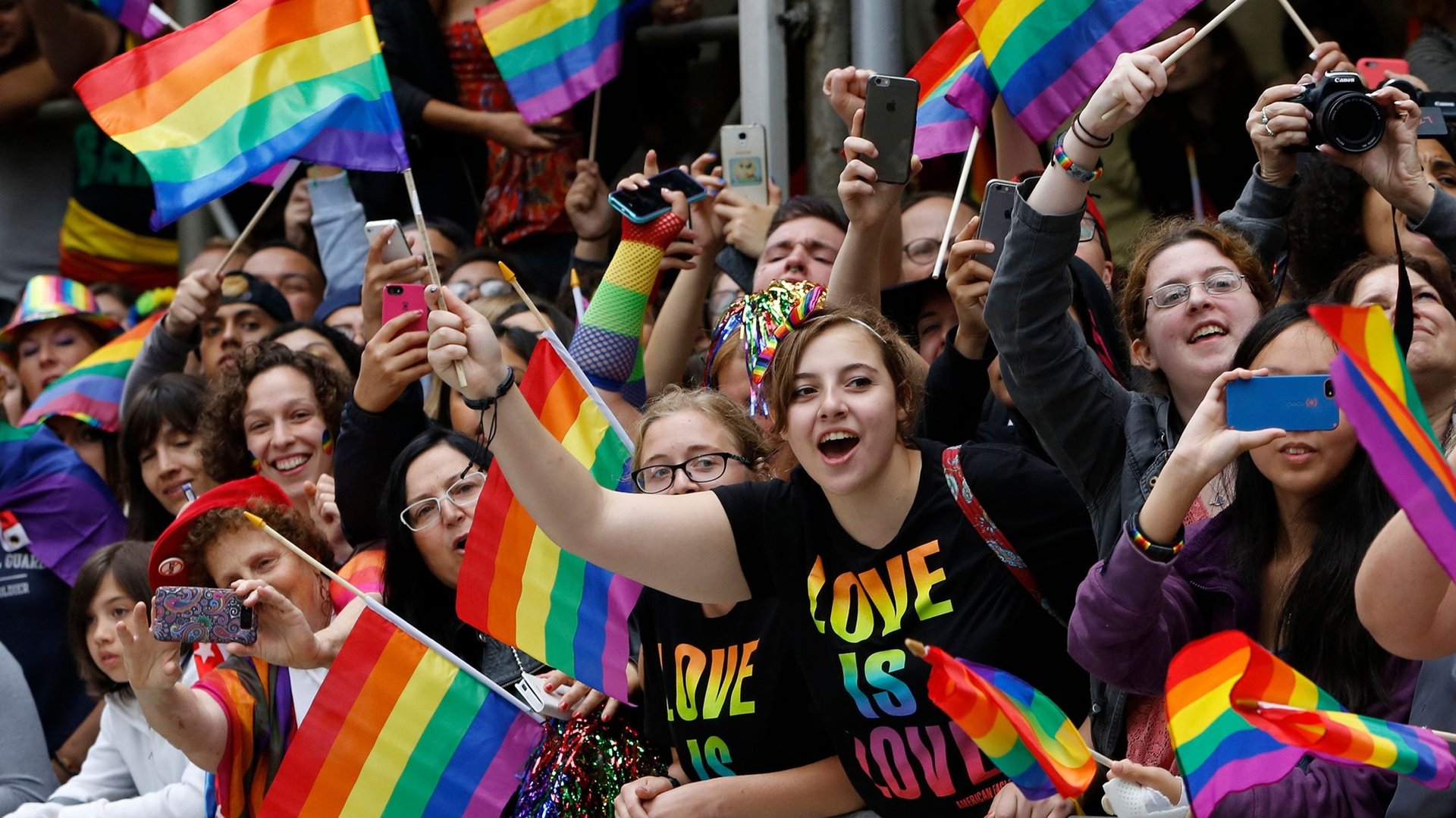Don’t confuse Pride parades for LGBTQ equality
If we measured our progress toward LGBTQ equality based on how many people participate in Pride parades and proudly wave rainbow flags alone, we would assume we’re nearly there. But while awareness and allyship seem to be on the rise, the LGBTQ community continues to face discrimination and sometimes even lacks access to basic job protection.


If we measured our progress toward LGBTQ equality based on how many people participate in Pride parades and proudly wave rainbow flags alone, we would assume we’re nearly there. But while awareness and allyship seem to be on the rise, the LGBTQ community continues to face discrimination and sometimes even lacks access to basic job protection.
More than half of US states still don’t prohibit employment discrimination based on sexual orientation or gender identity.
Even if you happen to employ workers in one of the 22 states that prohibit discrimination based on sexual orientation, the law may permit transgender and LGBT people to be denied housing, healthcare, and basic services and protections. Workplace culture can’t help but mirror the same stigma the LGBTQ community faces outside of work.
Acceptance and allyship of the LGBTQ community are far different, and in some ways often more complicated, than acceptance and allyship of other minority groups. Sexual orientation is not always conveyed through outside appearance, as gender and race often are. So for many in the LGBTQ community, openly identifying as part of this community at work means coming out over and over again, to colleagues, managers, and clients, by sharing bits and pieces of personal information.
In the early 80s, I worked at a company that wasn’t accepting of the LGBTQ community. Openly hostile remarks were regularly made about gay and lesbian people. In one diversity training, we underwent a word association exercise, and a senior leader admittedly told the group that when he heard the word “lesbian,” the first word that came to his mind was “problem.” This generally unwelcoming culture forced my ongoing internal debate: Should I be myself and talk openly and truthfully about my partner, or keep silent in fear prejudice would ensue?
It is painful to keep an aspect of yourself hidden or separated from your “work self.” It becomes nearly impossible to engage in conversations about what you did over the weekend, or your life outside of the four walls of an office. It feels like hiding a piece of your true self every time you have a conversation, take a meeting, or walk into the office.
And when LBGT people do decide to come out at work, it doesn’t mean colleagues are accepting—one study found 70% of non-LGBT employees believe it’s “unprofessional” to discuss sexual orientation or gender identity in the workplace.
While it’s true that organizations have come a long way since the 80s, there is still more to be done. Here is where I think companies should start:
First, educate. I often hear from employees that it’s more confusing to identify bisexually than to identify as gay or lesbian, because their straight colleagues have a hard time wrapping their minds around sexual fluidity. Give employees a chance to openly connect and learn about these differences, whether through employee-led groups, educational events, formal training or open conversations.
Next, check your role model status. Who on your senior leadership team or board of directors is gay? And if there is anyone who is gay, are they at ease with talking about it? If employees don’t see people in senior management who are like them—in this case part of the LGBTQ community—it makes it more difficult to come out at work, let alone to imagine a long-term future with the company.
Finally, really focus on inclusion and not just diversity. Overall, publishing of company data on diversity numbers is helpful to moving society forward, but executives and people driving change from the top of organizations become fixated on these numbers. It’s great that we’re overhauling hiring and onboarding processes—but what happens once employees are integrated into their new team?
The next step is allyship. Allyship moves the needle on LGBTQ inclusion programs because it allows workplaces to move beyond physical safety and toward psychological safety. When members of the LGBTQ community know they are surrounded by people who accept them for exactly who they are, it creates a safe space and a healthy work environment where coming out is commonplace.
I’ve seen firsthand how stigma around LGBTQ hurts economic prosperity and puts individual empowerment at risk. Throughout my career, I’ve seen incredible change. I’m proud to work for one of the first employers to add transgender health benefits to our insurance policies. I can be myself at work, and talk openly about my partner. But most importantly, if and when our LGBTQ community is threatened, I trust our senior leaders to fight for what’s right. It’s time we remove the stigma and stand together, proud of who we love.
Scott Beth is Intuit’s chief diversity and inclusion officer.